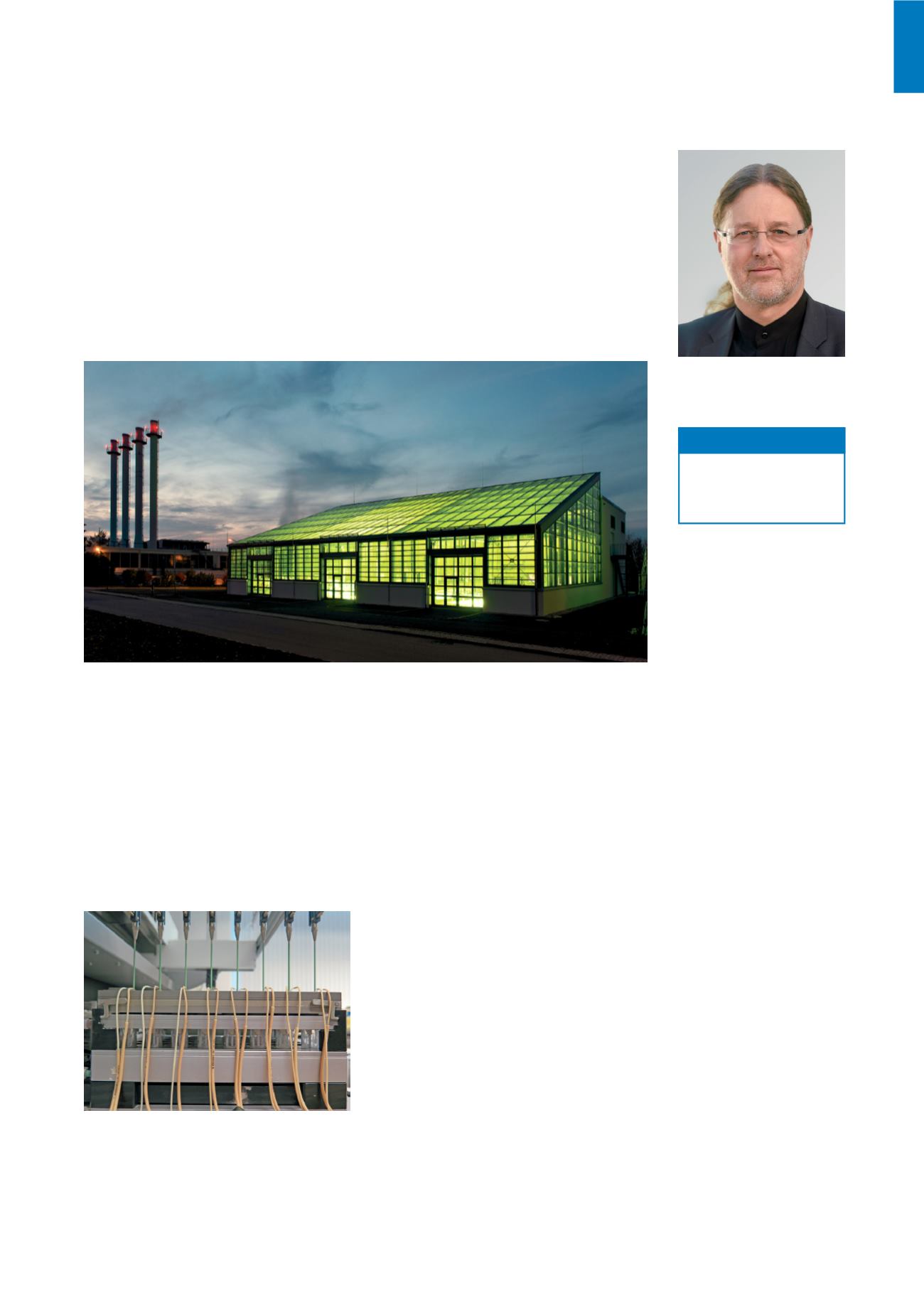

Biochemical Engineering
319
Biochemical Engineering
Industrial biotechnology
Prof. Dr.-Ing.
Dirk Weuster-Botz
Bioreactors
The effective generation of process
information represents a major bottleneck
in microbial production process develop-
ment and optimization. An approach to
overcome the necessity of a large number
of time- and labor-consuming experiments
in lab-scale bioreactors is miniaturization
and parallelization of stirred-tank reactors
along with automation and digitalization.
Highlight
Continuous operation of the bioreactor
unit with 48 parallel single-use stirred-tank
bioreactors developed at the Institute of
Biochemical Engineering enables the fast
identification of microbial reaction kinetics
within one set of parallel experiments.
Projects
n
Production of halophilic enzymes
using
Haloferax
volcanii
in stirred-tank
bioreactors
n
Continuous fermentations in miniatur-
ized stirred-tank bioreactors
n
Multi-parameter analytics in parallel
bioreactors
n
Industrial biotechnology (‘white biotechnology’) makes use of micro
organisms or enzymes for the industrial production of chemicals like
special and fine chemicals, building blocks for agricultural or pharma-
ceutical products, additives for manufacturing as well as bulk chemicals
and fuels. Renewable resources and CO
2
are the favored raw materials
for industrial biotechnology. The Institute of Biochemical Engineering is
dealing with all aspects of the technical use of biochemical reactions for
industrial biotechnology. The research focus is on bioreactors and bio
catalysis, as well as on (gas-)fermentation and isolation of bioproducts.
www.biovt.mw.tum.de/bioverfahrenstechnik
d.weuster-botz@lrz.tum.dePhone +49.89.289.15712
Contact
The new pilotscale photobioreactors of the Institute of Biochemical Engineering are operated in the TUM-Algae-
Tech-Center at the Ludwig-Bölkow Campus in Ottobrunn using CO
2
as the carbon source (copyright: TUM)
Continuous operation of a bioreactor unit with
48 parallel single-use stirred-tank bioreactors on
a milliliter-scale (copyright: Schmideder, TUM)


















